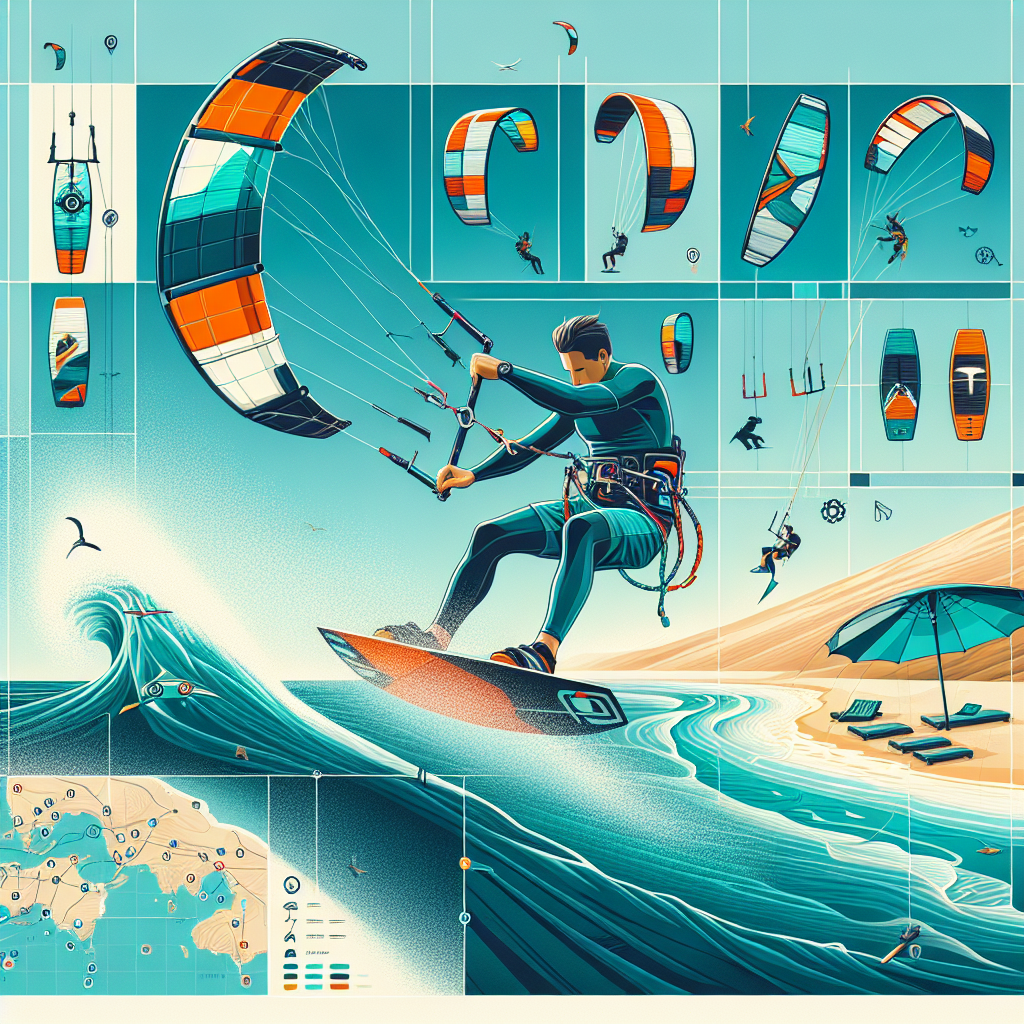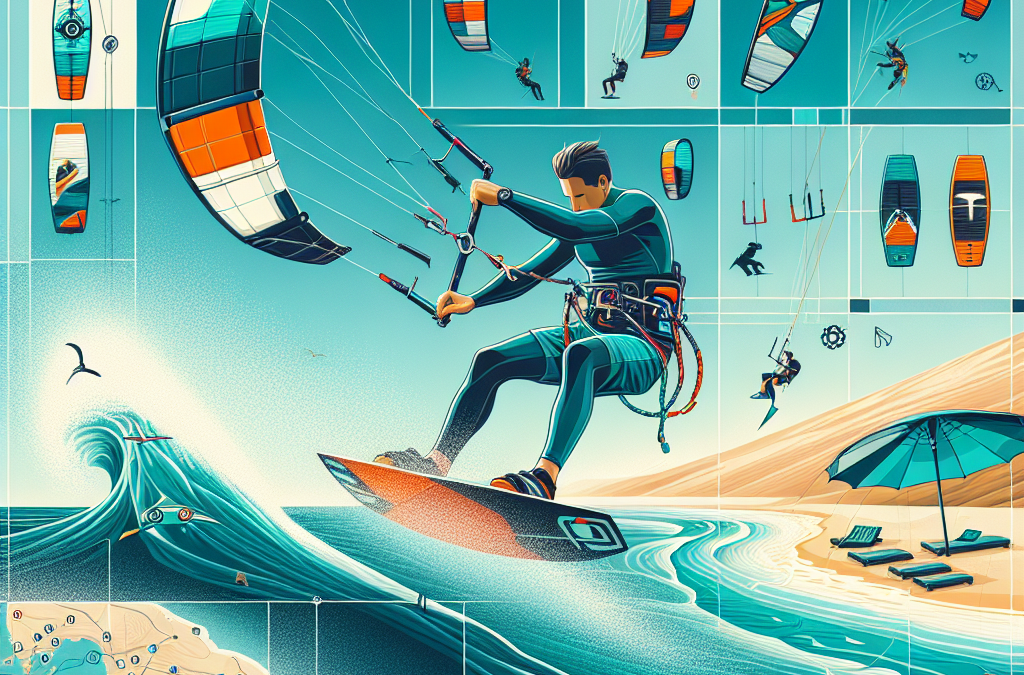If the allure of combining extreme sports and nature’s elements piques your interest, then the article “Kiteboarding: Harnessing the Power of Wind and Water” is just the ticket for you. Here, we unravel the thrill and allure of kiteboarding, an adrenaline-charged water sport that beautifully blends surfing, windsurfing, paragliding, and gymnastics. This article helps you to better understand the ins and outs of kiteboarding, including essential techniques, safety measures, and the sheer joy associated with harnessing the natural forces of both wind and water. This grand adventure may just be the exhilarating new pastime you’ve been searching for—allow yourself to be swept away by its magnetic charm!
Understanding Kiteboarding
Kiteboarding, also known as kitesurfing, continues to captivate adventurers across the globe. In this article, we’ll aim to shed some light on this exhilarating sport and give you useful insight into kiteboarding, detailing its history, the equipment you’ll need, and how to get started.
What is Kiteboarding?
Kiteboarding is a thrilling water sport that combines elements of wakeboarding, windsurfing, snowboarding, surfing, and paragliding. It involves harnessing the power of the wind with a large, controllable kite to move across the water on a kiteboard, which closely resembles a wakeboard.
Historical Background
Although surface water sports have a long illustrious history, kiteboarding as we know it only emerged in the late 20th century. Its roots can be traced back to the likes of Gijsbertus Adrianus Panhuise, who secured a patent in 1977 that involved a type of windsurfing with a parachute-type kite. However, it wasn’t until the late 1990s that modern kiteboarding gained popularity, thanks to evolving technology and growing interest on a global scale.
Popularity and Growth of Kiteboarding
Kiteboarding has since taken the world by storm. With intense thrill and physical demand, it’s attracted a dedicated following of enthusiasts, drawn into the unique blend of water, wind, and adrenaline. Increasing numbers of schools, rental shops, and competitions worldwide are testament to its expanding popularity.
Fundamentals of Kiteboarding
Before you dive into the water, it’s essential to grasp the fundamentals of kiteboarding. Understanding how it works and the influence of natural elements is key to mastering this sport.
Mechanism of Kiteboarding
At its core, kiteboarding is about controlling the kite to generate pulling force. When the wind hits the kite, it creates lift and drag, propelling the kiteboarder across the water. The kiteboarder steers the kite, akin to steering a bicycle, by manipulating the bar connected to the lines of the kite.
The Role of Wind in Kiteboarding
Wind is the driving force behind kiteboarding. The wind’s direction, speed, and height affect the kite’s power. Kiteboarders use wind forecasts to choose suitable days for kiteboarding and to select the right kite size. Cross-shore and cross-onshore winds are generally favored for safe and enjoyable kiteboarding.
Kiteboarding Powered by Water
The kite’s power is further enhanced by the water’s fluid surface. When the kite pulls, the water allows smooth, uninterrupted movement, enabling speed and navigational control. This synergy between wind and water is the essence of kiteboarding.

Equipment Required for Kiteboarding
The adventure of kiteboarding requires specialized equipment. It’s crucial to choose the right gear to ensure a safe and enjoyable experience.
Kite Types for Kiteboarding
There are different types of kites used in kiteboarding, including inflatable kites and foil kites. Your choice of kite should be influenced by factors such as wind conditions, skill level, and personal preference.
Choosing the Right Board
Kiteboards come in different shapes and sizes, all tailored for varied skill levels or specific riding styles. Beginners usually start with larger, twin-tip boards while more advanced riders may prefer smaller, directional surf-style boards.
Harness: Harnessing the Power
A harness connects the rider to the kite, bearing the pull of the kite and freeing the rider’s hands to control the steering bar. Harnesses come in different styles, including seat, waist, and vest harnesses. Your choice depends on comfort, skill level, and riding style.
Protective Gears and Accessories
Safety is paramount in kiteboarding. Protective gear such as helmets, impact vests, and safety hooks are essential, as well as accessories like wetsuits, gloves, and booties for comfort and protection against various weather conditions.
Kiteboarding Techniques
Mastering kiteboarding involves getting a handle on various techniques, from basic control to advanced maneuvers.
Basic Control and Maneuvering
Basic control includes learning how to launch and land the kite, steering it, and controlling its power. Maneuvering involves skills like edging the board for speed control and changing direction.
Body Dragging Techniques
Body dragging is an essential skill where the rider learns to use the kite’s power to move across the water without a board. It’s a precursor to actual kiteboarding and builds confidence in kite control.
Performing Jumps and Tricks
Once you’ve grasped the basics, performing jumps and tricks can be the icing on the cake. From simple high jumps to more intricate maneuvers like spins and loops, they add an extra thrill to the sport.

Learning to Kiteboard
The best way to learn kiteboarding is by seeking professional instruction. A reputable school will provide the necessary training to get you on the water safely.
Choosing the Right School
Look for a school that is accredited by a recognized kiteboarding organization. The instructors should be certified, and the school should have adequate safety measures in place.
Effective Kiteboarding Lessons
A thorough kiteboarding course will cover theory, safety instructions, kite setup, practice on land, water practice, and progressively challenging tasks. Ensure your course includes these components for effective learning.
Self-learning Resources
Alongside formal lessons, self-learning resources such as instructional videos, online tutorials, and kiteboarding forums can supplement learning. Although these cannot replace proper hands-on training, they can augment your understanding and skill development.
Safety Measures in Kiteboarding
Kiteboarding can be risky if you don’t take safety precautions. Understanding the weather, following rules and etiquette, and knowing what to do in emergencies are vital.
Understanding Weather Conditions
Respect for the weather is crucial. Mastering how to interpret weather forecasts and recognizing signs of changing weather conditions can significantly reduce risk.
Kiteboarding Etiquettes and Guidelines
Rules and etiquette help ensure everyone’s safety. This includes respecting no-go areas, giving way to other kiteboarders, maintaining a safe distance from others, and respecting wildlife.
Emergency Protocol in Kiteboarding
Knowing what to do in an emergency could save your life. This includes understanding how to use your safety release systems, self-rescue techniques, and when to ditch the gear and swim to safety.
Competitive Kiteboarding
For those wishing to test their skills, competitive kiteboarding offers an exhilarating challenge.
Kiteboarding Competitions and Tournaments
Competitions cater to all levels, from regional contests to international championships. Formats range from races and freestyle contests to big-air and wave-riding events.
Famous Kiteboarding Athletes
The world of competitive kiteboarding is home to many accomplished athletes. Riders such as Aaron Hadlow, Gisela Pulido, and Robby Naish have pushed the boundaries of what’s possible in kiteboarding.
Training for Competitive Kiteboarding
Training for competition involves honing technical skills, building physical strength and stamina, and developing strategic awareness. A disciplined approach and professional coaching are often keys to success.
Health and Fitness Benefits of Kiteboarding
In addition to being fun and thrilling, kiteboarding is a fantastic workout.
Physical Fitness and Strength
Kiteboarding provides a whole-body workout involving cardiovascular exercise, strength training, balance, and flexibility. Regular kiteboarding can help boost overall fitness, muscle strength, and endurance.
Mental Health Benefits
The outdoor setting, thrill of the sport, and camaraderie with fellow kiteboarders contribute to mental well-being. It can reduce stress, promote relaxation, and boost your mood.
Injury Risks and Prevention
Like any sport, kiteboarding carries risk of injury. Common injuries include sprains, fractures, and cuts. Using appropriate safety gear, learning proper techniques, and staying within your skill level can drastically reduce injury risk.
Environmental Impact of Kiteboarding
While kiteboarding’s interaction with the environment is generally considered minimal, there are some factors to be mindful of.
Interactions with Marine Life
Kiteboarding can disturb marine life, particularly nesting birds. Always be conscious of your surroundings and avoid areas known to be sensitive habitats.
Effects on Coastal Ecosystems
Launching and landing from the beach can contribute to erosion, especially in high traffic kiteboarding areas. Adhere to designated areas to minimize impact.
Promoting Sustainability in Kiteboarding
As kiteboarding enthusiasts, we can help promote sustainability by practicing responsible beach etiquette, using eco-friendly products, and participating in beach clean-up events.
The Future of Kiteboarding
Kiteboarding is a dynamic sport continually evolving due to advancements in technology and a passionate community.
Technology Advancements in Kiteboarding Equipment
Advancements in kite and board design, safety systems, and wearable technology are pushing the boundaries of what’s possible in kiteboarding and making the sport more accessible.
Increasing Accessibility to Kiteboarding
Due to more schools, rental resources, and growing communities, kiteboarding is becoming more accessible. Furthermore, adaptive equipment and practices make kiteboarding possible for individuals with various abilities.
Potential New Disciplines and Techniques
As the sport evolves, new disciplines and techniques continue to emerge. Riders push boundaries and redefine what’s possible, driving the thrilling future of kiteboarding.
Kiteboarding is a captivating sport that harnesses the raw power of wind and water. With the right equipment, instruction, and safety measures, you too can embark on an exhilarating kiteboarding adventure.

